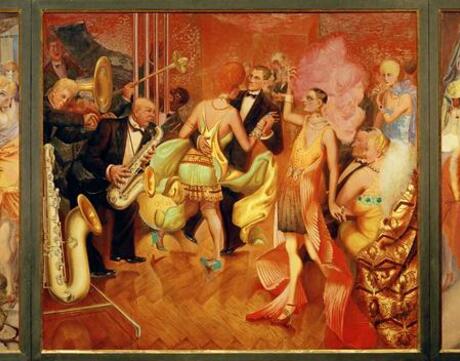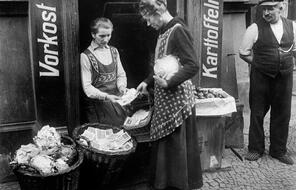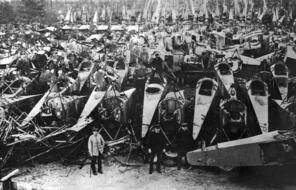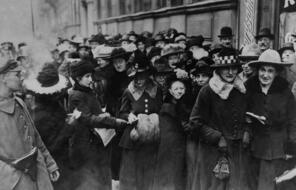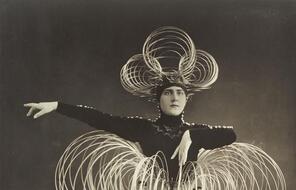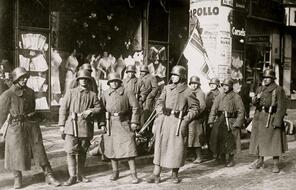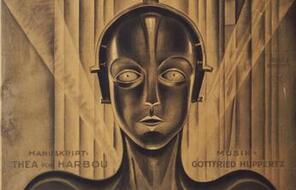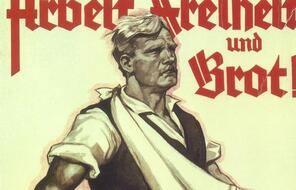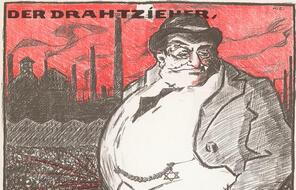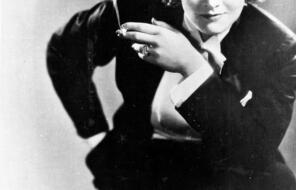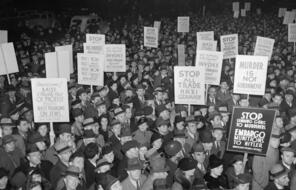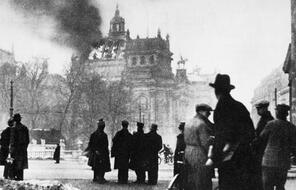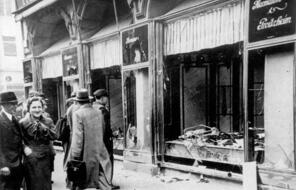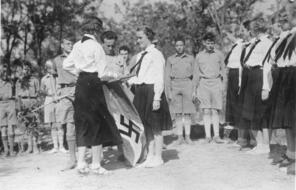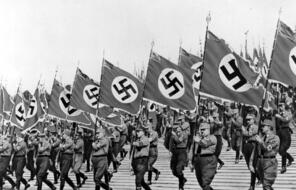After World War I ended in 1918, Kaiser Wilhelm fled to the Netherlands, and Germany became a republic. The Weimar Republic was characterized by contrasts and conflicts. The Weimar government granted significant new rights and freedoms to individuals and groups, beginning an era in which creativity and experimentation flourished. At the same time, the republic struggled to convince many Germans, accustomed to monarchy, to accept and trust its authority. The people’s trust in the republic was especially damaged as it faced economic crises as well as challenges from political parties that were hostile to democracy.
Two very different moods characterized Weimar politics and society. The first mood was one of excitement and creativity. Newly permitted freedom of expression in art, music, dance, and architecture burst forth in Weimar culture and left a lasting legacy for our modern world. Women took on new roles in Weimar society, as they constituted roughly a third of the German workforce after World War I, exercised their new right to vote, and held political office for the first time.
The second mood was one of anxiety and fear. The pace of change, especially in expanding political rights and social freedoms, made many Germans uneasy and sparked backlash against the changes. Many also feared the impact of communism, which had taken over Russia and threatened to spread its abolition of private wealth and property to Germany, by violence if necessary. This fear was heightened by two economic crises that tested the leadership of the Weimar government: the hyperinflation that beset the republic in its early years and the Great Depression in its final years. Parties from across the political spectrum clashed violently in the streets throughout the Weimar era, leaving citizens on edge. Meanwhile, interest in and enthusiasm for the message of ultra-conservative forces, in particular the growing National Socialist Party with its message of racial hatred and its demand for a return to an autocratic government, continued to grow.
In his autobiography, artist George Grosz recalls how these moods shaped life in Germany during the 1920s:
Even the capital of our new German Republic was like a bubbling cauldron. You could not see who was heating the cauldron; you could merely see it merrily bubbling, and you could feel that heat increasing. There were speakers on every street corner and songs of hatred everywhere. Everybody was hated: the Jews, the capitalists, the gentry, the communists, the military, the landlords, the workers, the unemployed . . . the politicians, the department stores, and again the Jews.
An investigation of the Weimar Republic not only provides a crucial foundation for understanding the Nazi era that followed it but can also serve as a warning and a guide for democracies today. Historian Paul Bookbinder explains:
The history of the Weimar Republic illuminates one of the most creative and crucial periods in the twentieth century and serves as a significant case study of our own time. Many of the questions asked about the Weimar Republic are relevant to problems that individuals and societies face in the twenty-first century.
Historian Detlev Peukert has observed that the hallmark of the Weimar period was uncertainty.
In many ways, the crises and dilemmas Germans faced in the 1920s were similar to those that people in other nations have faced and continue to face today in times of transition and change.
